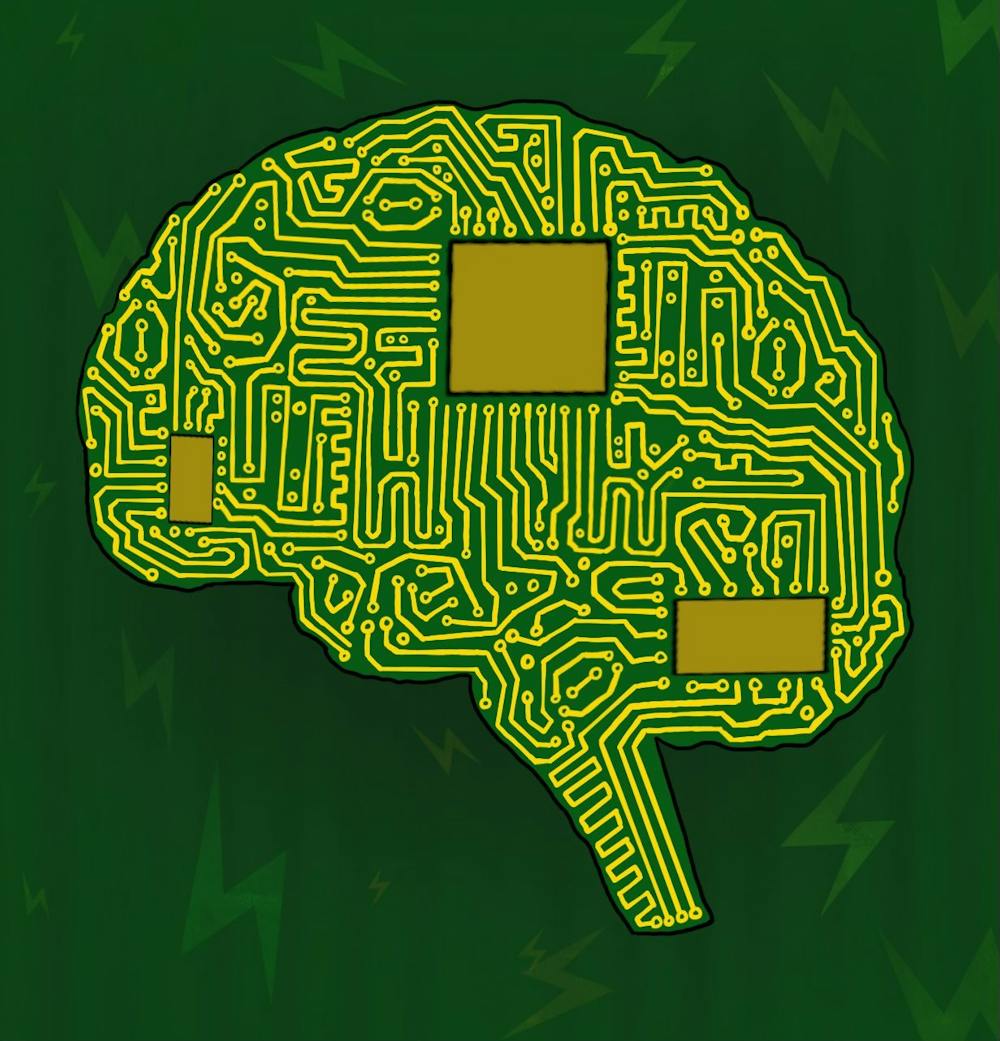PhD student Kiumars Aryana is investigating the potential of implementing a new type of memory — phase-change memory — to discover how to minimize power consumption and degradation of computer materials over time. Aryana’s discoveries could blaze a trail for the tactic to be used in neuromorphic computing, a type of AI that mimics neural networks in the brain. This could revolutionize the way artificial intelligence, including everyday devices like Alexa and Siri, is used across the world.
PCM is a form of computer memory that stores data by changing the phase of a particular alloy. Efficient and durable PCM allows for increasingly quicker processing speeds, which build towards improving current industry-standard AI speeds. This requires processing at a rate even faster than the human brain.
Quicker processing will allow the computer to process information in a fraction of a second and be able to identify things quickly – just as the human brain does. As data processing capabilities advance, artificial intelligence has the potential to reach extensive capabilities.
Although the technology we utilize today is sophisticated and complex, power consumption and efficiency in memory are major limitations that have thus far prevented artificial intelligence — and our collective ability to problem-solve quickly — from reaching the next level. Everyday computers have long-term storage and short-term Random Access Memory storage, and in order to save data for long term use, one has to save it to long-term memory. Computers typically use transistors to internally transmit these electrical signals.
The use of two separate memory systems is limiting, and researchers are trying to find a way to combine the two memory systems, eliminating the need for them to communicate back and forth with each other. To do so, Aryana and other doctorate students in the physics department are experimenting with neuromorphic computing.
“We do not have a section [in our brain] that stores the memory and a [separate] section to process information,” Aryana said. “We process the information between the neurons. We are trying to make an in-memory processing engine where you process the information inside of them.”
Phase-change memory uses heat to process and store data, replacing transistors with a material that switches between two states to bridge between RAM memory and long-term storage memory. These state changes of PCM material are substantial and rapid.
“What happens in these memory devices is that you melt the material and then you quench it,” Aryana said. “That means the material raises to around 600 [degrees] Celsius and then quickly cools back down to room temperature in the order of nanoseconds, so it is a very fast process.”
The use of heat in phase-change memory is degrading to the material and consumes a generous amount of power. Thus, the next step to develop efficient technology involves making this process more efficient and more durable.
“We are looking to find material compositions and techniques in order to reduce power consumption for devices because one of the biggest limitations now associated with phase change memory is their large power consumption which stems from the use of heat to change phases,” Aryana said.
Consistent use of the phase-change memory affects the properties of the material in the computer.
“[Phase-change memory] results in segregation of these materials inside our alloy,” Aryana said. “Over time, as you repeat this process over and over again, you will see that your material becomes segregated. Now, you have different elements inside a uniform alloy.”
A major component of Aryana’s research is determining which material compositions are most durable and minimize power consumption. He discovered that an alloy known as silicon telluride has the lowest thermal conductivity, allowing it to insulate heat at miniscule thicknesses.
PhD student Md Shafkat Bin Hoque often collaborates with Aryana and also studies thermal management of electronic devices. Hoque is exploring how to remove heat from phase-change systems. Both Hoque’s and Aryana’s research are important considerations in neuromorphic computing as it requires computers to be quicker, more efficient and durable.
“We are actively looking for means to remove that heat from transistors so it does not catch fire and it works efficiently as long as possible,” Hoque said. “My purpose in that research is to find different materials that can effectively remove heat from hot spots.”
Although PCM research is intended to manifest into artificial intelligence, it is still in its early stages. According to Hoque, there is a lot of work left in order to translate their work into creating a truly functional supercomputer.
“Supercomputers usually take a small part of the problem and then solve it,” Hoque said. “But if the supercomputers become faster, they can do the whole problem instead of just a small part … and it is possible to make them more energy efficient and smaller in size to the point where they might become available on a laptop or Mac.”
These discoveries have the potential to tremendously change the way we interact with artificial intelligence day-to-day life.
“It all comes down to the technology and the devices, how fast this technology can process the data,” Aryana said. “If we can have a processor that is significantly faster, that can perform all these computations on the spot, you can make Alexa or Siri much faster because they can process the information faster.”







